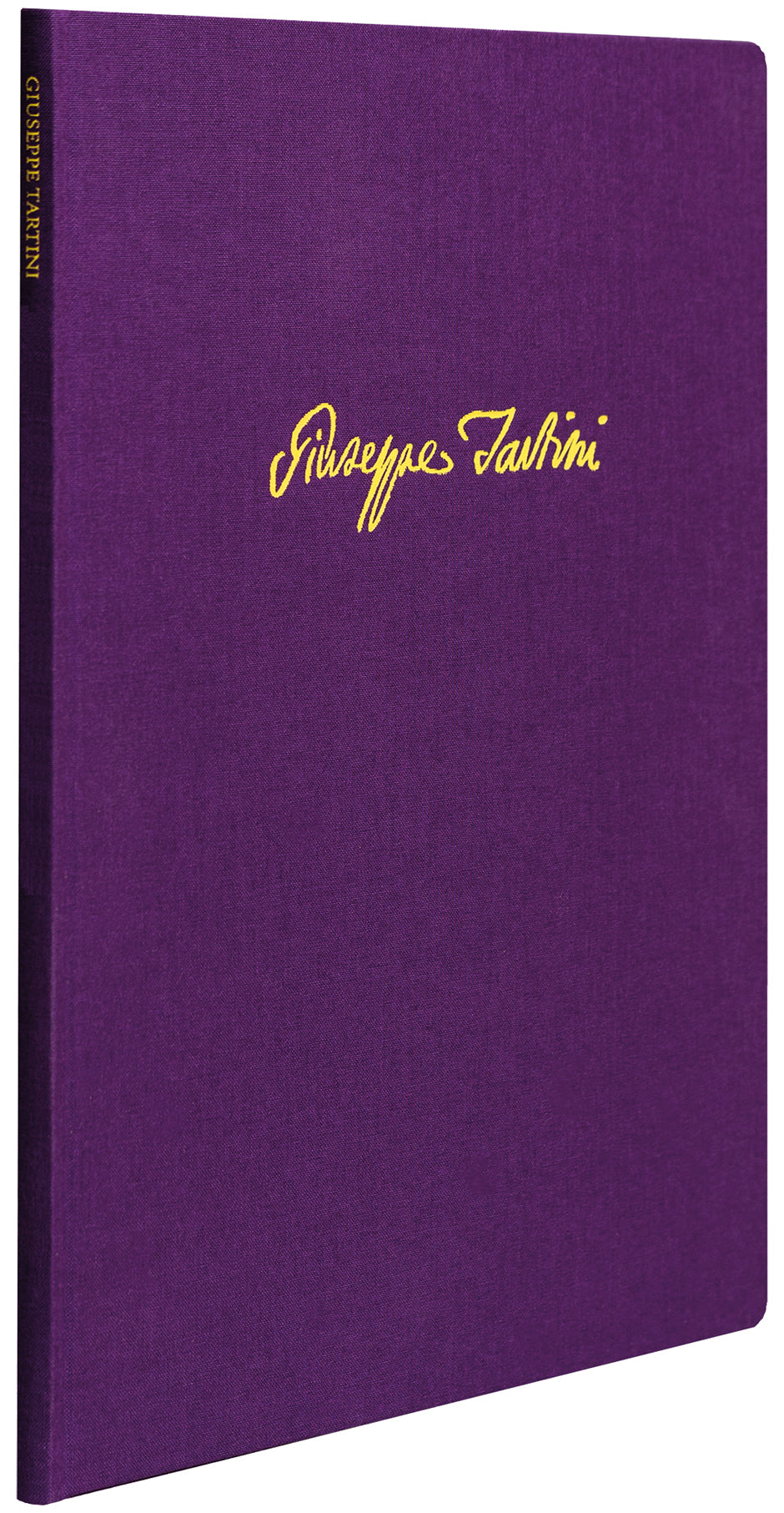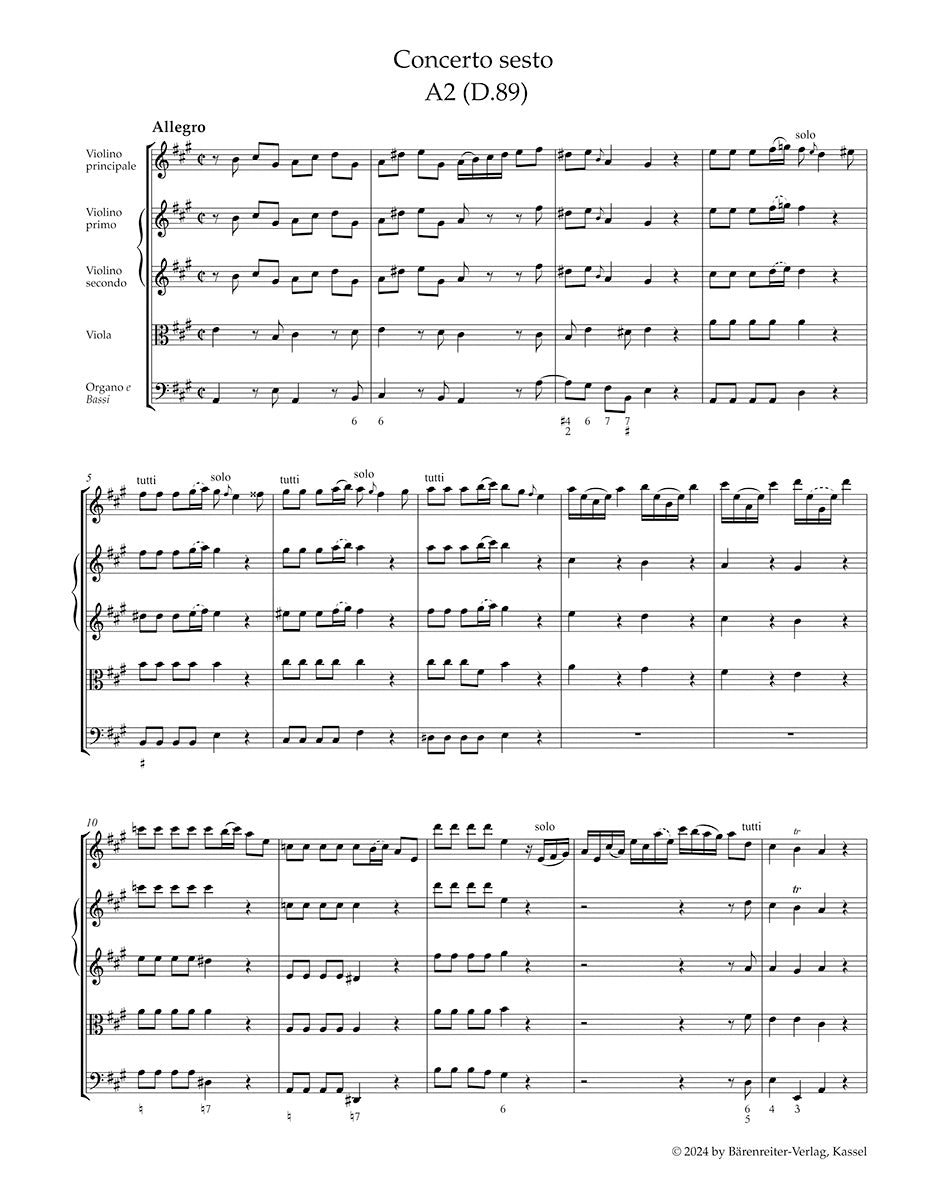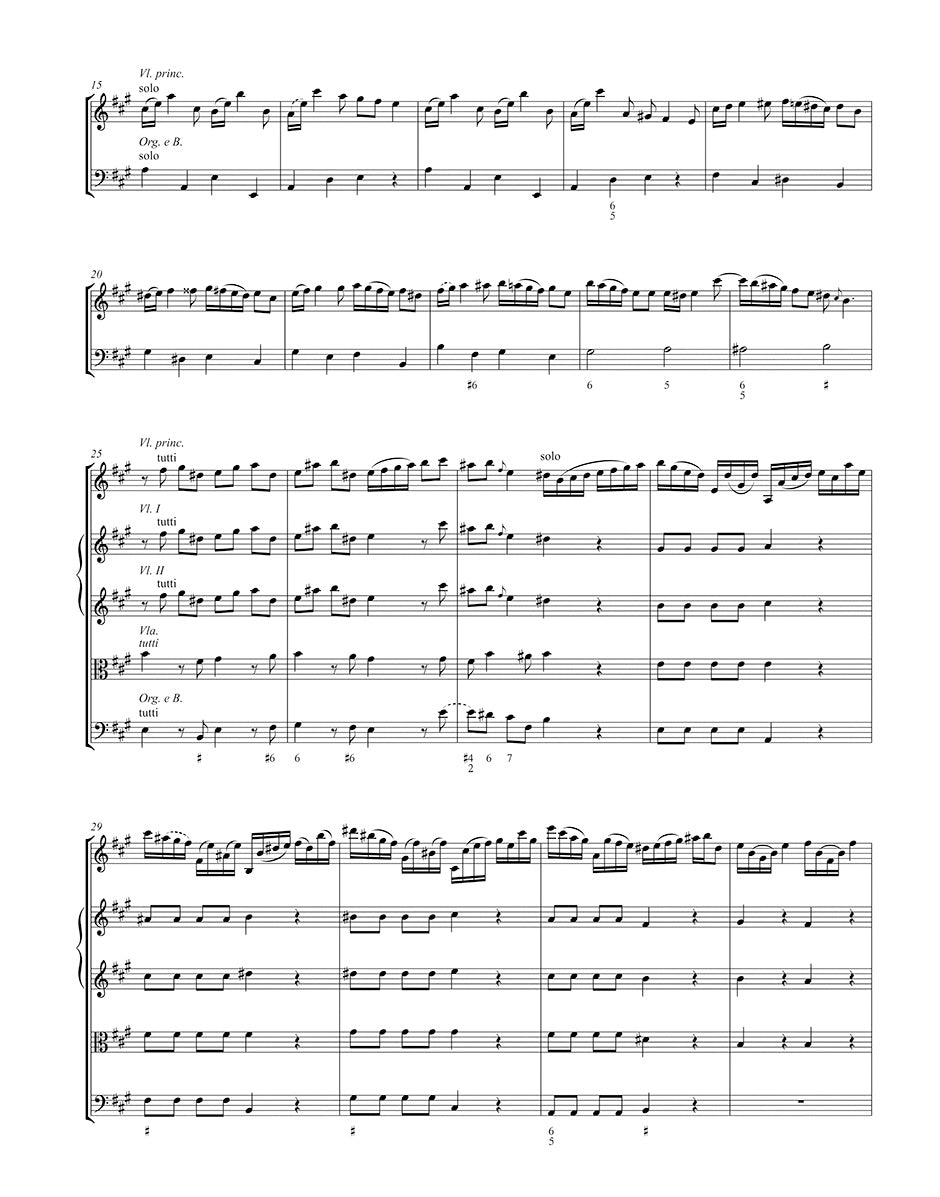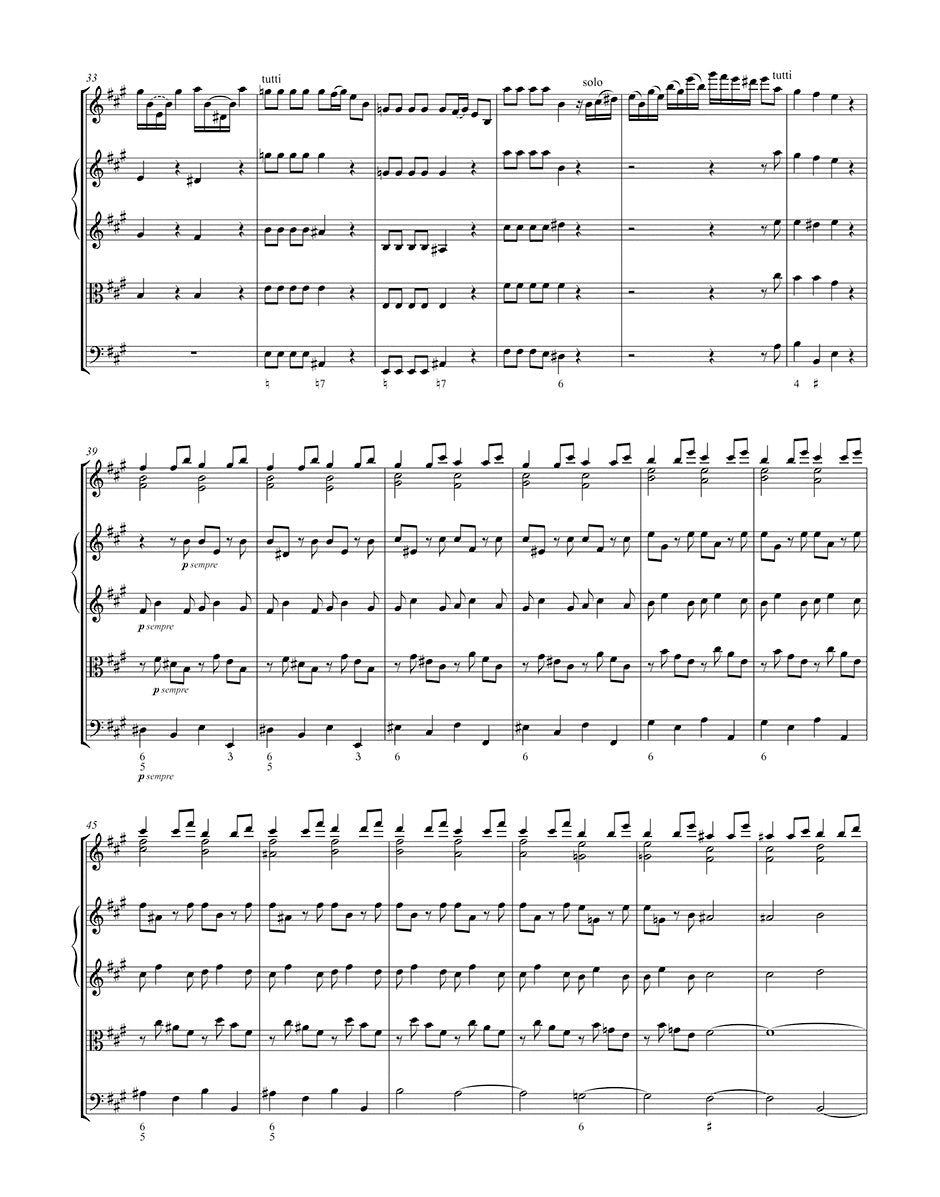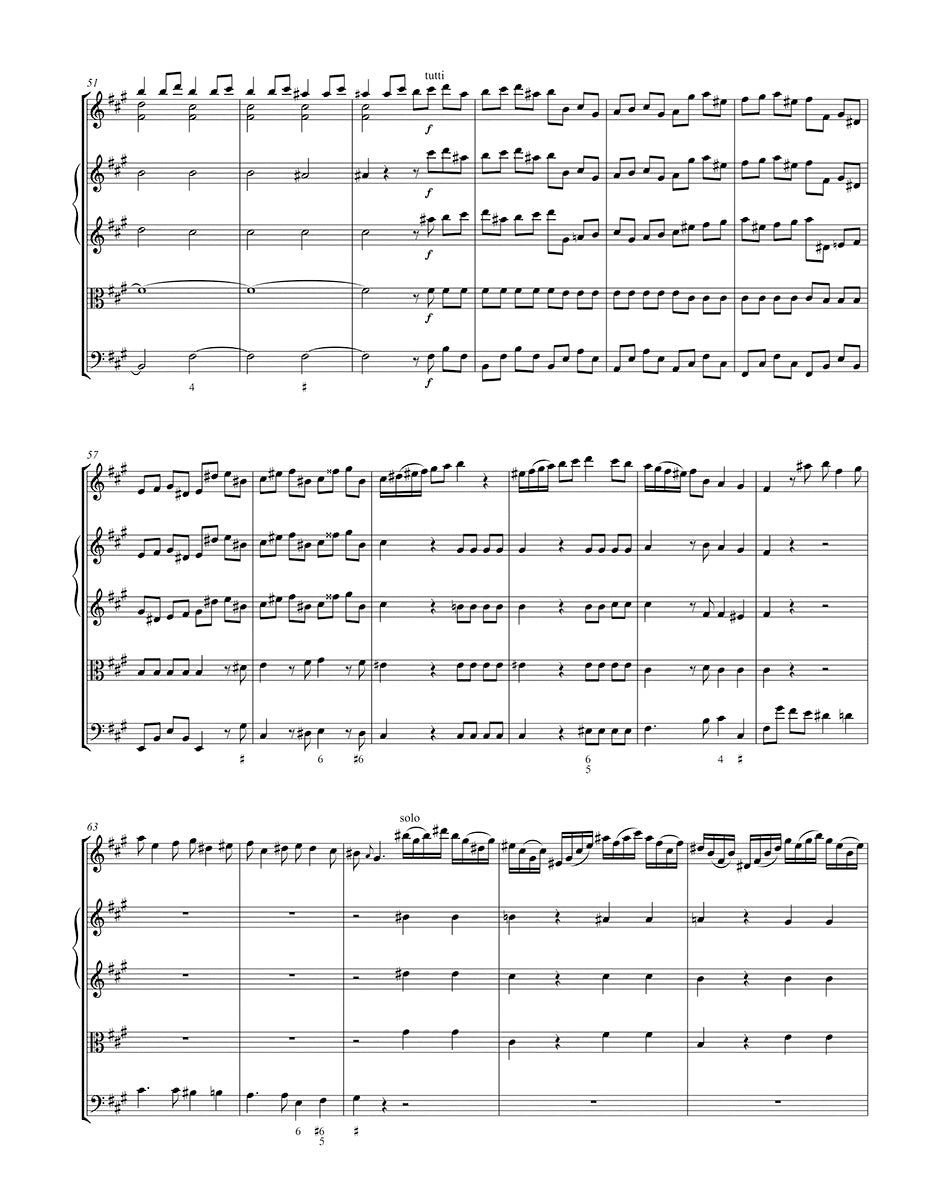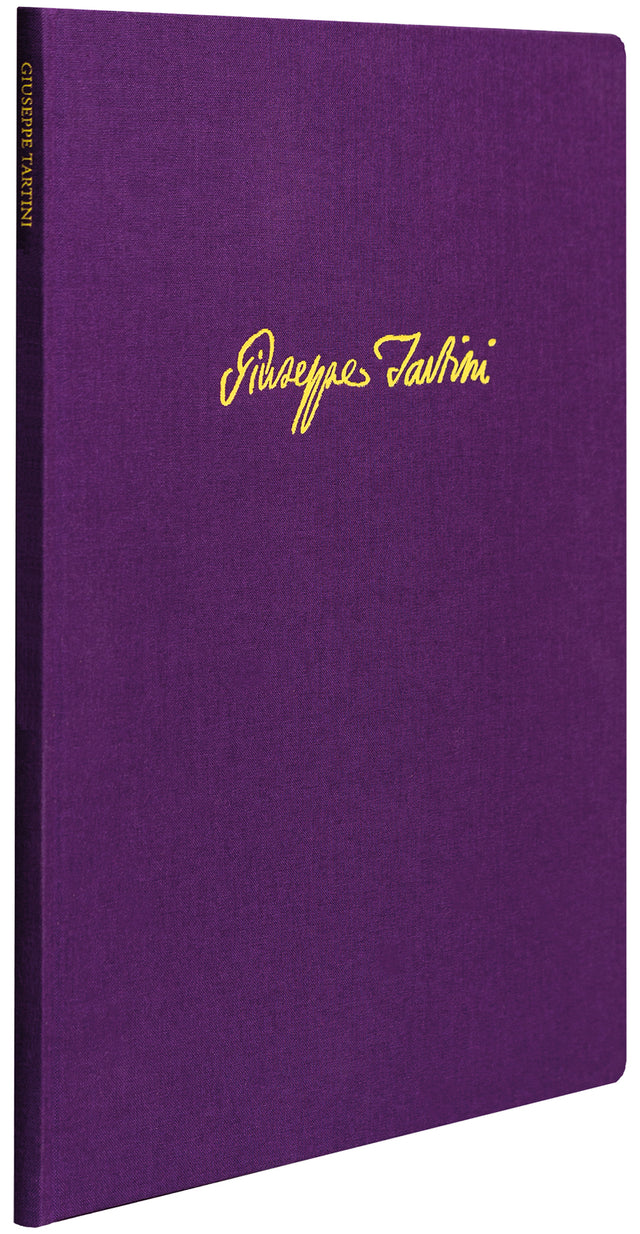Tartini: Sei concerti, Op. 1
Opera prima. Libro primo
Expected to ship in about a week.
- Composer: Giuseppe Tartini (1692-1770)
- Format: Full Score – Complete Edition
- Instrumentation: Violin, Orchestra
- Work: Violin Concerti, Op. 1
- Binding: Hardcover
- ISMN:
- Size: 10.4 x 13.0 inches
- Pages: 151
Description
In 1727, the Amsterdam publisher Michel-Charles Le Cène published a collection of six concertos by Tartini for solo violin and orchestra, entitled, Op. 1, "Book 1". It was the prelude to a large-scale publication project of initially twelve, later even 18 concertos, divided into three "books". While the first book was published without the composer's involvement (a legitimate practice at the time), Tartini was directly involved in the publication of the other two volumes.
The publication of these concertos rapidly accelerated the 35-year-old musician's rise from a virtuoso of local importance to a master of his trade with a Europe-wide reputation. The concertos follow the established Venetian form, but make remarkable new demands on bowing techniques to achieve innovative sound qualities, both in the solo part and in the accompanying orchestral parts. The fact that just a few months after publication Tartini founded a school for composition and violin playing in Padua, which trained dozens of first-class musicians, is evidence of the influence he exerted.
In its surviving form, Book 1 contains a large number of problems concerning the musical text, which the editor, Sofia Bisi, was able to solve in this edition by carefully examining all available sources. These include those from Berkeley and Dresden, as well as two autographs of outstanding editorial importance. A detailed historical introduction and a chapter on specific performance practice issues provide an in-depth understanding of Tartini's œuvre.
Publishers use a lot of words to describe what they sell, and we know it can be confusing. We've tried to be as clear as possible to make sure you get exactly what you are looking for. Below are descriptions of the terms that we use to describe the various formats that music often comes in.
Choral Score
A score for vocalists that only contains the vocal lines. The instrumental parts are not there for reference. Generally, cheaper than a vocal score and requires multiple copies for purchase.
Facsimile
Reproductions of the original hand-written scores from the composer.
Full Score
For ensemble music, this indicates that the edition contains all parts on a single system (there are not separate parts for each player). In larger ensembles, this is for the conductor.
Hardcover
Hardbound. Generally either linen-covered or half-leather.
Orchestral Parts
Similar to a wind set, this is a collection of parts. In the case of strings, the numbers listed are the number of copies included, though generally these are available individually (often with minimum quantities required).
Paperback
When publishers offer multiple bindings (e.g. hardcover) or study scores, this is the "standard" version. If you're planning to play the music, this is probably what you want.
Performance / Playing Score
A score of the music containing all parts on one system, intended for players to share. There are not separate parts for each player.
Set of Parts
For ensemble music, this indicates that there are separate individual parts for each player.
Solo Part with Piano Reduction
For solo pieces with orchestra, this is a version that contains a piano reduction of the orchestra parts. For piano pieces, two copies are typically needed for performance.
Study Score
A small (think choral size) copy of the complete score meant for studying, and not playing. They make great add-ons when learning concertos and small chamber works.
Vocal Score
A score prepared for vocalists that includes the piano/organ part or a reduction of the instrumental parts.
Wind Set
For orchestral music, this is a collection of wind and percussion parts. The specific quantities of each instrument are notated.
With Audio
In addition to the printed music, the edition contains recordings of the pieces. This may be an included CD, or access to files on the internet.
With / Without Fingering (Markings)
Some publishers prepare two copies - a pure Urtext edition that includes no fingering (or bowing) suggestions and a lightly edited version that includes a minimal number of editorial markings.

